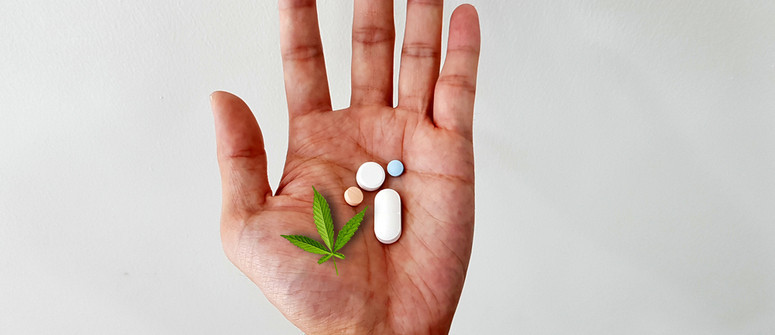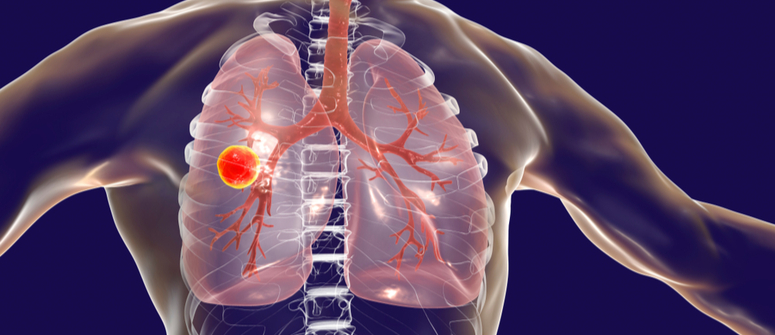Can CBD help with antibiotic resistance?

CBD has become one of the most popular wellness products on the market, and each customer has their reasons for picking it up. Now, with more research being conducted, there's evidence that CBD may be the key to fighting the antibiotic resistance we've built up in our bodies. Nothing is proven yet, but the results are promising nonetheless.
Contents:
CBD has gained a fair amount of attention as a potentially effective health supplement. Now, however, researchers are trying to determine if it can impact some of our most relied-upon medications: antibiotics.
"But why would they need CBD? What's wrong with antibiotics?" Well, at one point, there was nothing wrong, and no replacement was necessary. But just as animals and humans evolved to deal with threats, diseases like tuberculosis and pneumonia have adapted to survive treatments that once wiped them out. The difference, however, is that it hasn’t taken millions of years; it’s happened over a few decades.
WHAT IS ANTIBIOTIC RESISTANCE?
This phenomenon is known as antibiotic resistance. It’s global, affects all ages and walks of life, and is only getting worse in areas where antibiotics are widely accessible. They’re pretty freely handed out in places where a prescription is required, but they're even more common in places with fewer drug restrictions.
Since there isn’t much we can do to make current antibiotics effective again, we have to focus on finding a worthy replacement. In that effort, CBD has started to garner attention as a possible avenue to fight harmful bacteria. Before we get into the details, we will say now, CBD cannot offer an alternative but positive research suggests there could be good interactions.
ANTIBIOTIC RESISTANCE: A PERFECT STORM
This information can be a lot to take in at once, so let’s take a step back and get a better idea of the problem at hand. As we brought up in the beginning, antibiotic resistance is the phenomenon of a disease becoming resistant to the very medications used to treat it.
It’s brought about by a perfect storm of success followed by failure. After all, antibiotics first became widespread and relied upon because they were once extremely effective. Harmful bacteria would (and still does) pop up, but you could simply take a few rounds of antibiotics and be good to go.
As common wisdom tells us, though, you can’t have too much of a good thing. Doctors began prescribing antibiotics when patients didn’t really need them, and people wouldn’t hesitate to take them.
“Just in case”, people would think, unaware that this would give an advantage to the very disease-causing bacteria they were trying to fight.
HOW AND WHY ANTIBIOTIC RESISTANCE OCCURS
At this point, you may be wondering why increased antibiotic use leads to antibiotic resistance at all. Even if it happened, wouldn’t it take as long as the evolution of animals and humans?
As microbiologists will explain to you, it’s because the same evolutionary events are happening at a much more rapid pace. See, even following an effective antibiotic treatment, just one of the bacterium may somehow escape.
From there, it can multiply, giving rise to a new generation of bacteria better able to resist treatment. The first generation may not be very successful, but each subsequent generation will have greater and greater success.
Since their reproduction cycle takes a fraction of a fraction of an animal or human’s, this evolution happens, relatively, in the blink of an eye.
COMMON TYPES OF DRUG-RESISTANT BACTERIA
Given how widespread the threat has become, it’s wise to get more familiar with the types of drug-resistant bacteria out there. We can’t cover them all here, but here are a few major examples.
MRSA — METHICILLIN-RESISTANT STAPHYLOCOCCUS AUREUS
We typically see staph infections as a nuisance, but not as a particular threat. Now, a drug-resistant strain of the bacteria that causes it, known as methicillin-resistant staphylococcus aureus (MRSA), has become common not only in hospitals, but in surrounding communities as well.

TB — MYCOBACTERIUM TUBERCULOSIS
Easily one of the most infamous bacterial infections, tuberculosis (TB), while treatable, takes six months to two years to cure when antibiotics work. Now, however, the two main anti-TB drugs are becoming virtually ineffective as multidrug-resistant TB (MDR TB) has begun to spread. This challenges our ability to treat the disease at all, let alone cure it.
CRE — CARBAPENEM-RESISTANT ENTEROBACTERIACEAE
Remember those spinach-related E. coli outbreaks back in 2006? That very same strain of bacteria is becoming more and more drug-resistant by the day, along with the entire enterobacteriaceae family. Known specifically as carbapenem-resistant enterobacteriaceae (CRE), the diseases they cause can sometimes be life-threatening.
COULD CBD BE AN ANTIBIOTIC?
That leads us to a question: Would CBD be able to serve in an antibiotic capacity?
Scientists have been trying to answer that question for a long time. The first study we can find was conducted in 1976, detailing the minimum inhibiting concentrations of THC and CBD against staphylococci and streptococci. Another study, performed in 2008, found that a wide variety of cannabinoids, including CBD, could have some potential, but weren’t fully showing it.
In other words, we don’t have proof one way or the other. However, recent findings point in a much more positive direction.
As of March 2020, Scientific Reports published a study showing how CBD may be able to help fight back staphylococcus and other gram-positive bacteria. Those, in short, are part of a specific sub-category with a cell wall that makes them resistant to most antibiotic treatments.
In the study, scientists observed that CBD was able to decrease the membrane potential of harmful bacteria. In combination with bacitracin (BAC), it also decreased their autolysis rates and minimised their expression of the cell division regulator gene known as ezrA.
CAN YOU USE CBD AND ANTIBIOTICS TOGETHER?
So, it is clear while CBD may have a positive action, it is not currently considered or useable as on its own for antibiotic purposes.
Considering that, you may be wondering if taking both at the same time would work even better than using one over the other. Well, it can get complicated due to the way our body processes substances.
To be more specific, CBD has the potential to affect the rate at which our body metabolises antibiotics. It interacts with specific enzymes in our liver, altering our system in a way that can lead to accidental elevated doses of antibiotics—or CBD—in the body. As such, CBD and antibitocs should not be used together.
.jpg)
.jpg)

.jpg)
